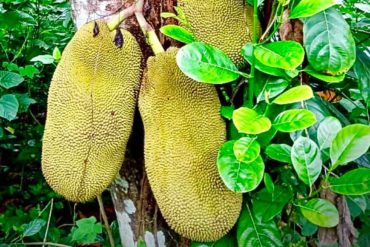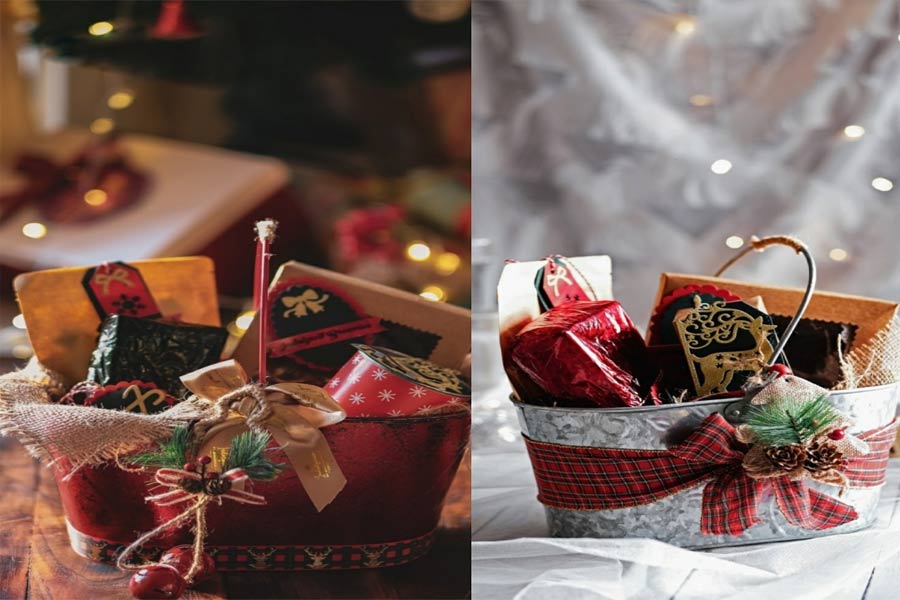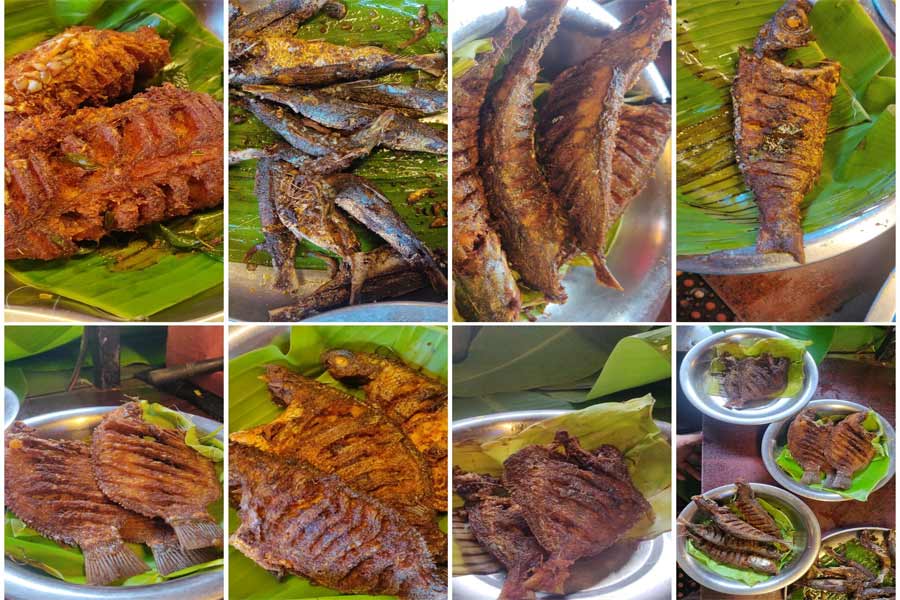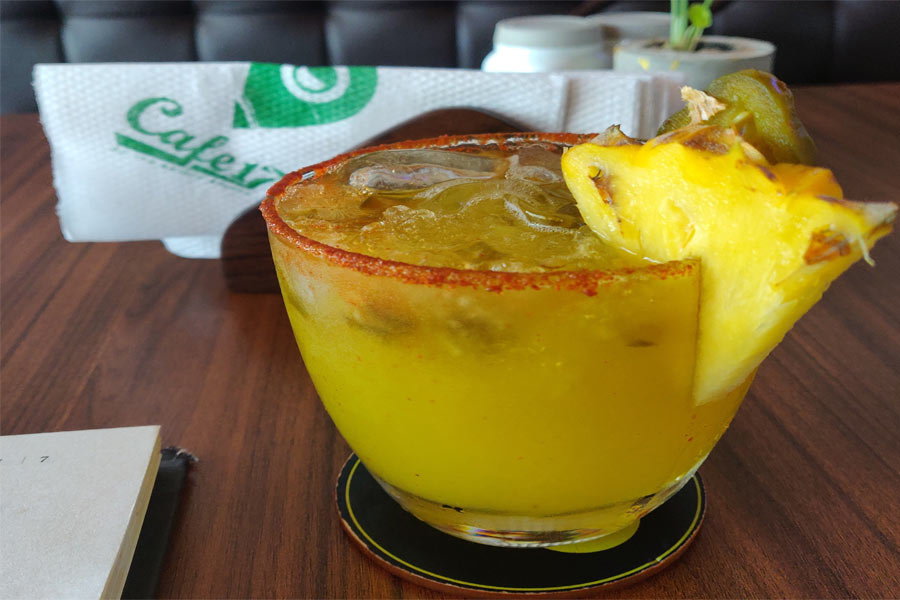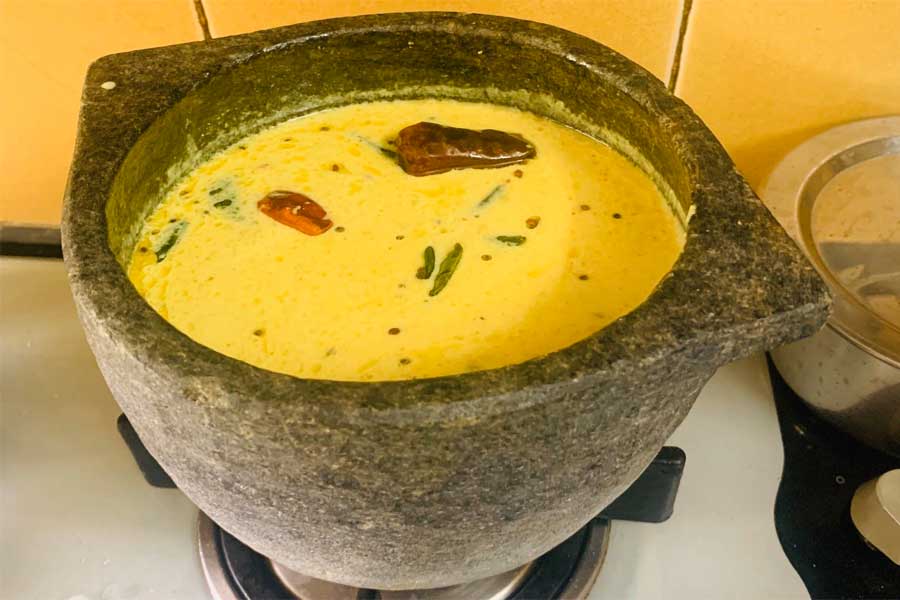Like any kalan-loving Malayali, I have a special utensil called kalchatty in my kitchen. A kalchatty is nothing but an eye-shaped vessel made of soapstone or literally a stone vessel (Kal/kallu stands for stone in Malayalam). I have carried my kalchatty with me wherever I go and have gifted a few of those to my friends, who discovered more uses for it as home décor than cooking. However, I shall not digress.
The stone vessel I remember that was used in hearths back home was black, felt smooth and cool to touch. I guess that was my first lesson in heat conduction. And years later when I was scouting for a kalchatty, most of them were grey in color. But I learned that years of cooking in it makes the vessel blackish.
All new kalchatties had to go through an initiation ceremony. They must be filled with plain water, or better still, starch water, and left to stand for hours, maybe even overnight, to be ready for cooking. The vessel must always be placed on low flame—there is a danger of the mighty stone cracking if kept on a high flame initially.
The kalchatty is reserved solely for yoghurt-based curries. For a large part of my life, the science of it escaped me. It was a common sight to see the humble kalchatty sit sulking on the fire with the kalan—a yoghurt based curry, or avail—a medley of vegetables and coconut paste. But it must be remembered that only at the end must the yoghurt be added as the souring agent.
I remember my grandmother’s slim wrists with thin clanging gold bangles taking the kalchatty off the stove with such dexterity using the garment she wore on her upper body that I always thought she had super human strength. “Carry the kalchatty carefully”. She would say, “If it falls, the floor will crack, your legs will break.” I can still hear her instructions. And the kalchatty gave immense preserving powers to the kalan—it usually lasted for a good three to four days.
A spoon was made by twisting a tender jackfruit leaf to scoop rice gruel, and along with kalan, it made for a hearty morning meal. Those days, rice was not a much-maligned food.
For festivals like Onam or Vishu, the kalan was made the previous day, for the taste enhanced with time. The stone vessel provided and maintained the necessary temperature for the sour and thick yoghurt to cook without the fear of curdling. Curdling is the process wherein the protein in the yoghurt congeals or breaks out when heated. My love for chemistry began right there in the kitchen watching the kalan cooking.
For a good kalan, you can use raw bananas or yam or colocasia or even white pumpkin. Cut the vegetable into large pieces and cook them in the kalchatty with water, turmeric, chilly-powder and salt. I have heard of adventurous aunts using pineapple too. Later, after the vegetable is cooked, ground coconut paste and cumin seeds are stirred in. The heat is turned off when the rawness of all the ingredients disappears. The stone vessel continues to remain hot and retains the high temperature for a little while. When the beaten sour yoghurt is added, there is no direct heat to curdle it and the steady heat of the kalchatty warms it. The kalan is then tempered with coconut oil, fenugreek seed, mustard seeds, dried red chilies and the ubiquitous curry leaf. In the summer, ripe mangoes find a place in this curry adding a sweetish taste and an orangish color.
It’s a soul food, eaten not necessarily warm or hot, with red rice or rice gruel. For the many who have moved away from their homes, the only reminder of their roots is the food and the vessel: the kalan and the kalchatty.

